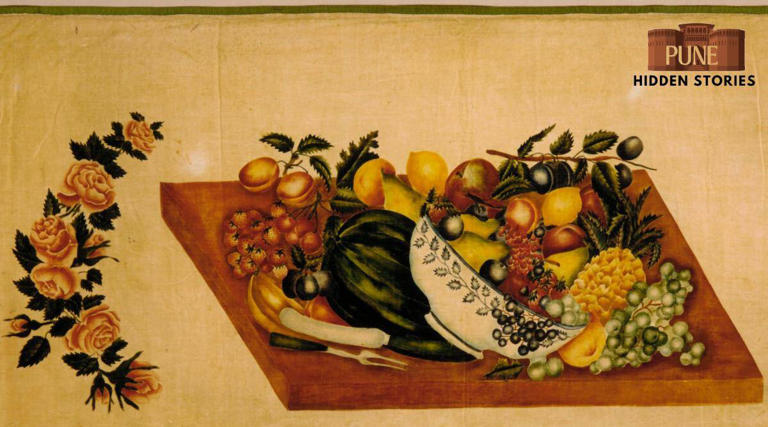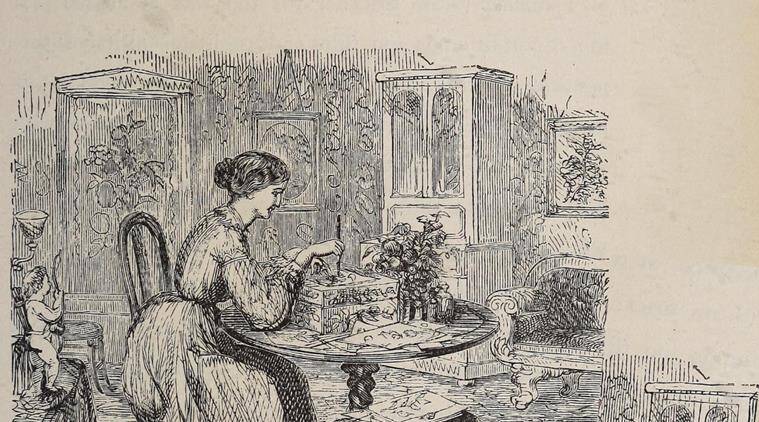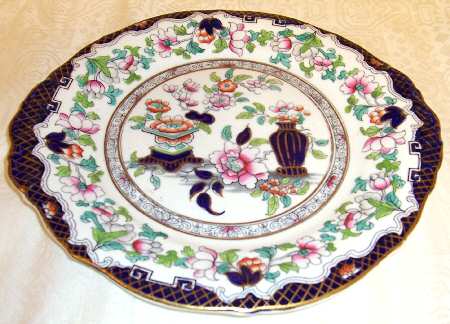Tsuktiben Jamir
Poonah painting was a technique that gained popularity in Victorian England during the 19th century. It revolved around images of flowers, birds, and other objects, imitating Oriental art by applying thick opaque colour on thin paper without adding a backdrop or shading. The art style was trendy among women and, for a long time, was seen as an essential component of a girl’s education in affluent English society. Theorem Painting and Oriental Tinting were some other names given to the craft. Originating from Poonah (now Pune) in India, this particular name was derived due to its association with using the renowned “Poonah” brush.
Poonah painting rose to prominence in England during that time, mainly due to its extraordinary capacity to reproduce the attraction of Oriental art, which was then much loved and appreciated. This creative method allowed the artists to create eye-catching and minutely detailed patterns on various materials, including paper, silk, velvet, crepe, and even light-coloured wood. Its success resulted from the art form’s true attraction since it provided a unique and alluring style that spoke to the time’s creative sensibility. Because of this, demand for Poonah paintings increased dramatically, turning them into highly prized ornamental items and collectables in British culture.

Courtesy: The Indian Express.
The intricacy and meticulousness of Poonah painting also reflected the skilled craftsmanship and dedication of the artists involved, further enhancing its prestige and desirability among art enthusiasts and collectors. Creating a Poonah Painting necessitated using specific materials, such as Poonah Paper, which served as a type of tracing paper, and a distinctive tool known as a Poonah Brush, characterized by its rounded and dense bristles. Numerous establishments provided training in this craft, as evidenced by advertisements in newspapers and magazines of that era.
The technique involved meticulous tracing, cutting, and layering to achieve a visually captivating outcome. According to The Lady’s Book from 1831, the initial step involved placing a sheet of Poonah Paper over the original subject, which could encompass a variety of objects like flowers, fruit, or butterflies. The outlines of each colour were marked on the paper using a steel point. Subsequently, these outlines were meticulously cut out using a sharp-pointed penknife or specialized tools created specifically for this purpose.
Another sheet of tracing paper was employed to delineate the compartments for each colour, allowing for the marking and cutting of distinct sections. This repeated procedure resulted in a series of frames with carefully crafted openings through which specific colours could be applied to the Poonah Paper.

Courtesy: The Indian Express.
These factual steps, combined with the utilization of Poonah Paper and the unique Poonah Brush, contributed to the distinctiveness and intricacy of Poonah Painting, making it a captivating and sought-after artistic practice during that era. The involvement of young girls in the training and production of Poonah Paintings further emphasizes the significance of this craft within the social and cultural fabric of the time.
Poonah’s Painting was frequently derided since it was not considered legitimate art as it was only done by women and even more so because it was not considered authentic drawing and painting. Though generally overlooked in contemporary times, the craft is a monument to the imagination and commitment of women in Victorian England. It offers insight into a little-known facet of their creative expression.






